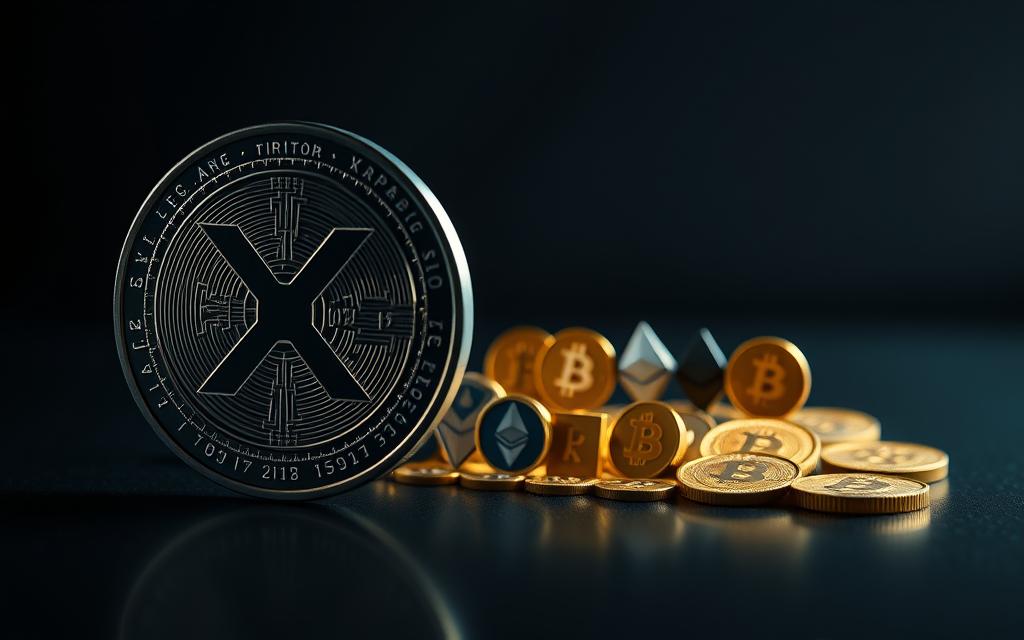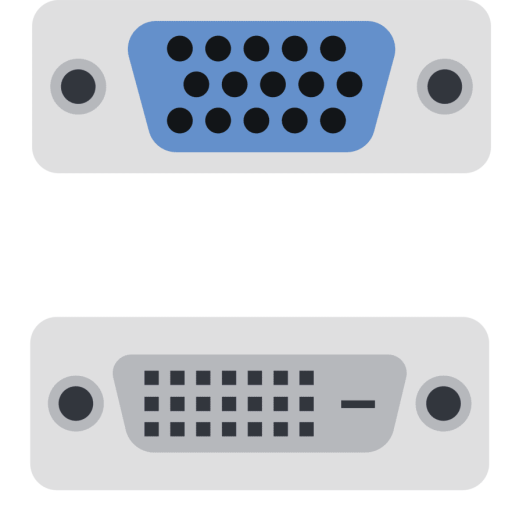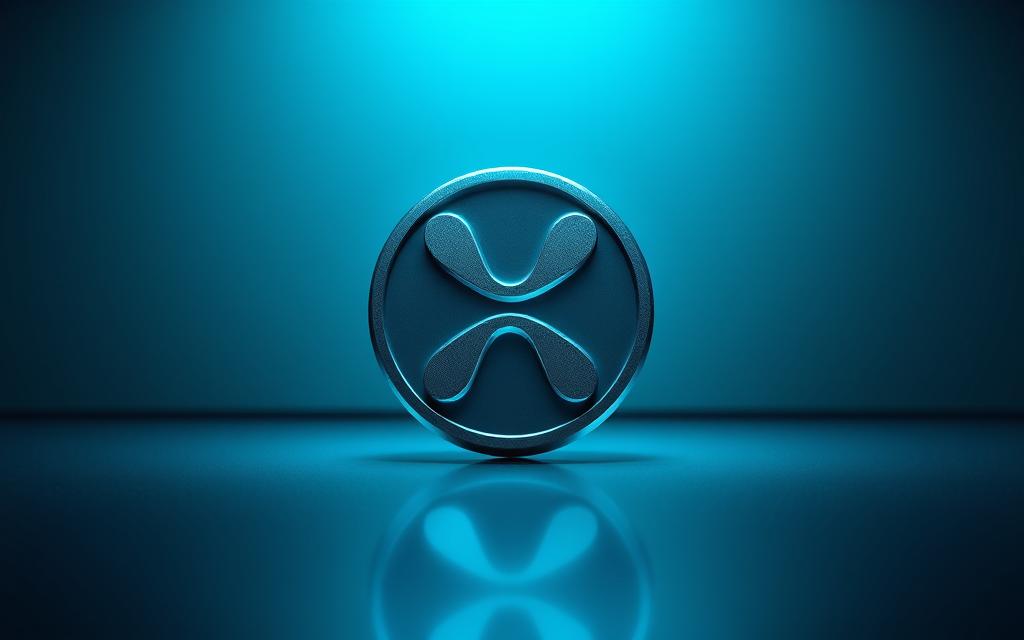What Is XRP? The Digital Asset Behind Ripple Explained
XRP is a digital asset created by Ripple, a San Francisco-based company, to facilitate cross-border transactions. Launched in 2013, XRP serves as a bridge currency for financial institutions, enabling a fast and cost-effective system.
Unlike traditional cryptocurrencies like Bitcoin, XRP’s design and functionality are centered around revolutionizing international payment systems. With its low fees and scalability, XRP has become one of the leading cryptocurrencies by market capitalization.
This introduction aims to provide a comprehensive understanding of XRP and its role in the financial technology ecosystem, highlighting its unique features and the controversy surrounding its classification.
Understanding What Is XRP Crypto
XRP is a unique cryptocurrency that is closely tied to Ripple, a technology company focused on transforming the way financial institutions transfer money. To understand XRP, it’s essential to grasp its definition and basic concept.
Definition and Basic Concept
XRP is a digital asset that was launched in 2012 by Ripple Labs, the company behind the Ripple payment protocol. Unlike many other cryptocurrencies, XRP is not decentralized; it is owned and managed by Ripple. XRP is designed to act as a bridge currency, facilitating the exchange between different currencies, including other cryptocurrencies and fiat currencies. This makes it an attractive solution for financial institutions looking to improve the efficiency of cross-border payments. For more information on how XRP is used in global payments, you can visit this page.
Relationship Between XRP and Ripple
While XRP and Ripple are closely associated, they are distinct entities. Ripple is a technology company that develops payment protocols and exchange networks for financial institutions. XRP, on the other hand, is the cryptocurrency that is used in some of Ripple’s products, such as On-Demand Liquidity (ODL). Ripple uses XRP to facilitate liquidity for cross-border transactions, but it also offers solutions that do not require XRP. The XRP Ledger operates independently of Ripple and would continue to function even if the company ceased to exist. This distinction is crucial for understanding the role of XRP in the broader cryptocurrency market.
The Origin and History of XRP
Ripple’s journey, which started in 2012, is crucial to understanding the evolution of XRP. The company was initially founded as OpenCoin, later changing its name to Ripple Labs, and finally to Ripple in 2015.
Creation and Launch in 2012-2013
XRP was created and launched in 2012-2013 by Ripple Labs, with the goal of facilitating fast and efficient cross-border transactions. The XRP Ledger was designed to enable a network that could handle a high volume of transactions simultaneously.
Evolution of Ripple Labs to Ripple
As Ripple Labs evolved into Ripple, the company’s focus shifted from being primarily cryptocurrency-centric to developing enterprise blockchain solutions for financial institutions and banks. Ripple developed key products like xCurrent, xRapid (later renamed On-Demand Liquidity), and xVia, with XRP playing a crucial role in these solutions. The company’s strategic shift aimed to solve real-world problems in cross-border payments and remittances, expanding its reach into global markets.

How XRP Works: Technical Framework
Understanding XRP’s technical framework requires a dive into the XRP Ledger and its underlying mechanics. The XRP Ledger is a decentralized, open-source technology that enables fast and efficient transaction validation.
The XRP Ledger vs Traditional Blockchain
The XRP Ledger differs significantly from traditional blockchains. Unlike Proof-of-Work blockchains, the XRP Ledger uses a consensus mechanism called HashTree, where consensus is reached by comparing a single value derived from summarizing the ledger’s data, rather than comparing all the data. This approach allows for faster transaction processing times.
Consensus Protocol and Validation Process
The XRP Ledger Consensus Protocol (XRPLCP) enables fast and efficient transaction validation without mining. The consensus process involves a network of independent validators that vote on which transactions to include in the next ledger version. Unique Node Lists (UNLs) play a crucial role in this mechanism, as validators choose which other validators to trust. The three-phase consensus process includes gathering, voting, and accepting transactions. This process achieves Byzantine fault tolerance, allowing the network to function correctly even if some validators fail or act maliciously.
The XRP Ledger reaches consensus in just 3-5 seconds, significantly faster than proof-of-work blockchains. The validation process ensures the security and integrity of the XRP Ledger while maintaining high transaction throughput.
Key Features and Advantages of XRP
XRP offers several key features that make it an attractive digital asset for various financial applications. These advantages are primarily related to its transaction processing capabilities, cost efficiency, and environmental sustainability.
Transaction Speed and Scalability
XRP’s consensus mechanism allows for fast transaction processing, making it highly scalable. The XRP Ledger can handle a high volume of transactions per second, which is crucial for large-scale financial infrastructure.
Low Transaction Fees
Another significant advantage of XRP is its low transaction fees. The cost of transactions on the XRP Ledger is minimal compared to traditional payment systems and other cryptocurrencies, making it an economical choice for cross-border payments.
Energy Efficiency Compared to Mining-Based Cryptocurrencies
XRP’s energy efficiency is a notable benefit. Unlike cryptocurrencies that rely on energy-intensive mining operations, XRP uses a consensus protocol that consumes significantly less energy. This not only reduces the environmental impact but also lowers operational costs for institutions using XRP for payments and settlements. The pre-mined nature of XRP, with all 100 billion tokens created at launch, eliminates the need for ongoing mining, further contributing to its energy efficiency. 
XRP’s Role in Cross-Border Payments
XRP is transforming the landscape of international transactions with its on-demand liquidity solution. Traditional cross-border payments are cumbersome, involving multiple intermediary banks and currency conversions, leading to delays and increased costs.

On-Demand Liquidity Solution
XRP serves as a universal bridge currency, eliminating the need for multiple currency conversions. For instance, a payment sent from South African Rands (ZAR) to Argentine Pesos (ARS) can be converted to XRP, transferred, and then converted to ARS, reducing a multi-step process to just three steps. This on-demand liquidity solution simplifies international transactions, making them faster and more cost-effective.
Solving the Fiat Bridge Problem
The traditional correspondent banking system requires banks to maintain nostro/vostro accounts in multiple currencies, tying up valuable capital. XRP solves the “fiat bridge problem” by providing a single point of exchange between any two currencies. According to Investopedia, this capability particularly benefits emerging markets and exotic currency pairs that traditionally suffer from low liquidity and high costs.
By democratizing access to the global financial system, XRP makes all currency routes equally efficient, freeing up billions in trapped capital and enhancing the overall efficiency of international transactions.
XRP vs Other Cryptocurrencies
In the crowded cryptocurrency space, XRP has distinct advantages and disadvantages. Understanding how it compares to other major cryptocurrencies is crucial for investors and users.
Comparison with Bitcoin and Ethereum
XRP differs significantly from Bitcoin and Ethereum in its consensus mechanism and transaction processing. While Bitcoin and Ethereum use proof-of-work or proof-of-stake mechanisms, XRP utilizes the Ripple Protocol, allowing for faster transaction times and lower fees. This makes XRP more suitable for cross-border payments and micropayments.
Centralization Concerns and Criticisms
A major criticism of XRP is its perceived centralization due to Ripple’s significant influence and control over the majority of XRP tokens. Ripple initially created 100 billion XRP tokens, and although they have implemented an escrow system to manage their holdings, concerns about market manipulation and centralization persist. Critics argue that XRP acts as a “Trojan horse” for banks entering the cryptocurrency ecosystem. However, Ripple counters that the XRP Ledger is open-source and anyone can run a validator, promoting decentralization.

Legal Challenges and Regulatory Status
The ongoing legal battle between Ripple and the SEC has significant implications for XRP. The outcome of this case could determine the future trajectory of XRP’s value and its standing in the cryptocurrency market.
SEC Lawsuit and Allegations
The SEC’s lawsuit against Ripple alleges that XRP is an unregistered security. This legal challenge has created uncertainty around XRP, affecting investor confidence. The SEC’s actions have been a major talking point in the crypto community, with many experts weighing in on the potential outcomes.
Impact on XRP’s Market Position
The SEC lawsuit has had an immediate and significant impact on XRP’s market price, causing a substantial drop and leading to delisting from major U.S. cryptocurrency exchanges. The broader market consequences include reduced liquidity, increased volatility, and damaged investor confidence. Some key effects include:
- Delisting or suspension of XRP trading by many U.S.-based exchanges.
- A geographic shift in XRP trading volume from U.S. markets to international exchanges.
- Legal uncertainty affecting Ripple’s business relationships and potential partnerships.

Partial court victories for Ripple have positively affected market sentiment and XRP’s price recovery. The future of XRP and Ripple will likely depend on the outcome of this legal battle, with a favorable ruling potentially leading to significant appreciation in value.
Conclusion: The Future Outlook for XRP
As the cryptocurrency market matures, XRP’s value proposition as a bridge between traditional finance and digital assets becomes increasingly apparent. XRP’s unique position in the cryptocurrency ecosystem is defined by its design for institutional payment processing and cross-border transactions.
The growing adoption of XRP in international remittance corridors, such as the U.S. to Mexico, highlights its potential. For instance, Mexico’s largest cryptocurrency exchange, Bitso, is processing nearly 10% of remittances using XRP through Ripple’s On-Demand Liquidity product. This demonstrates XRP’s ability to facilitate low-cost, high-volume payments efficiently.
The resolution of the SEC lawsuit will be pivotal for XRP’s future, potentially leading to regulatory clarity that could drive adoption. Ripple’s continued partnerships with financial institutions worldwide may position XRP as a standard for international money transfers. As regulatory frameworks evolve, XRP’s long-term value proposition will be tested against traditional payment rails and newer cryptocurrency competitors.
FAQ
How does XRP differ from other cryptocurrencies like Bitcoin and Ethereum?
XRP is distinct due to its consensus protocol, which eliminates the need for mining, making it more energy-efficient. It also boasts faster transaction times and lower fees compared to many other digital assets.
What is the role of XRP in cross-border payments?
XRP serves as a bridge currency for international transactions, providing on-demand liquidity and solving the fiat bridge problem. This enables financial institutions to facilitate faster and more cost-effective cross-border payments.
How does the XRP Ledger compare to traditional blockchain technology?
The XRP Ledger is a decentralized, distributed ledger technology that uses a consensus protocol for validation, differing from traditional blockchain systems that rely on mining. This results in faster transaction processing times and increased scalability.
What are the advantages of using XRP for transactions?
XRP offers low transaction fees, fast transaction times, and high scalability, making it an attractive option for financial institutions and individuals alike. Its energy efficiency is also a significant advantage over mining-based cryptocurrencies.
How has the SEC lawsuit impacted XRP’s market position?
The SEC lawsuit has had a significant impact on XRP’s market value and liquidity. The uncertainty surrounding the lawsuit has led to a decrease in XRP’s market capitalization and trading volume.
Can XRP be used for purposes other than cross-border payments?
While XRP is primarily used for cross-border payments, its use cases extend to other areas, such as micropayments and tokenized assets. Its versatility and scalability make it a promising digital asset for various applications.
How does Ripple’s relationship with XRP impact the cryptocurrency’s value?
Ripple, the company behind XRP, plays a significant role in promoting and developing the XRP Ledger and its ecosystem. While Ripple’s actions can influence XRP’s value, the cryptocurrency’s market dynamics are also subject to broader market trends and investor sentiment.















